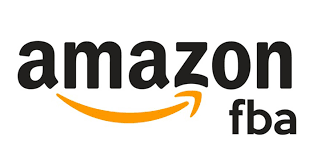Amazon FBA (Fulfillment by Amazon) is a popular service that enables sellers to store their products in Amazon’s fulfillment centers and have the retail giant handle order fulfillment, shipping, and customer service. However, sellers must understand the various costs associated with Amazon FBA to make informed decisions and maximize their profitability. In this article, we will delve into the details of Amazon FBA costs.
- Fulfillment Fees: One of the primary costs associated with Amazon FBA is the fulfillment fee. This fee covers storage, packing, shipping, and customer service. The exact fulfillment fee depends on the size and weight of the product. Amazon provides a useful best amazon fba tools calculator that allows sellers to estimate these fees for different products. Additionally, there may be additional charges for items that require special handling, such as oversized or dangerous goods. Sellers should carefully consider these fees when determining their product pricing and profit margins.
- Storage Fees: Amazon fba for beginners charges sellers for storing their products in their fulfillment centers. Storage fees vary depending on the time of year and the size of the product. There are two types of storage fees: monthly storage fees and long-term storage fees. Monthly storage fees are assessed for products stored in Amazon’s warehouses on a monthly basis. Long-term storage fees apply to products that have been stored for more than 365 days. To minimize storage costs, sellers should optimize their inventory management, avoid overstocking, and consider removing slow-moving or non-profitable products. To succeed as an Amazon FBA seller, it is crucial to have a clear understanding of the various costs involved. By comprehending and carefully managing fulfillment fees, storage fees, inventory removal fees, labeling and prep service fees, and other related costs, sellers can optimize their profitability and build a successful business on Amazon’s platform.
- Inventory Removal Fees: At times, sellers may need to remove their products from Amazon’s fulfillment centers. Amazon charges inventory removal fees for this service. The fees vary depending on the size and weight of the product and whether it is being returned to the seller or disposed of by Amazon. Sellers should carefully evaluate the need for inventory removal to avoid unnecessary expenses. Proper inventory forecasting and proactive management can help minimize these costs.
- Labeling and Prep Service Fees: Some products require additional labeling or preparation before they can be sent to Amazon’s fulfillment centers. Amazon offers labeling and prep services for a fee, which includes tasks such as applying labels, polybagging, and bubble wrapping. These fees depend on the complexity of the preparation required. Sellers should consider whether it is more cost-effective to handle these tasks themselves or utilize Amazon’s services. Careful consideration of the product’s requirements and associated costs is essential for making an informed decision.
- Other Fees: In addition to the aforementioned costs, there are other fees that sellers should be aware of. These may include referral fees, which are a percentage of the item’s price paid to Amazon for each sale, and variable closing fees for certain categories. There may also be charges for optional services such as advertising, inventory storage in non-standard sizes, and removal order disposal. Sellers should thoroughly review Amazon’s fee schedule and policies to understand the complete cost structure and plan their selling strategies accordingly.
Conclusion: To succeed as an Amazon FBA seller, it is crucial to have a clear understanding of the various costs involved. By comprehending and carefully managing fulfillment fees, storage fees, inventory removal fees, labeling and prep service fees, and other related costs, sellers can optimize their profitability and build a successful business on Amazon’s platform.
- These may include referral fees, which are a percentage of the item’s price paid to Amazon for each sale, and variable closing fees for certain categories. There may also be charges for optional services such as advertising, inventory storage in non-standard sizes, and removal order disposal. Sellers should thoroughly review Amazon’s fee schedule and policies to understand the complete cost structure and plan their selling strategies accordingly.
Conclusion: To succeed as an Amazon FBA seller, it is crucial to have a clear understanding of the various costs involved. By comprehending and carefully managing fulfillment fees, storage fees, inventory removal fees, labeling and prep service fees, and other related costs, sellers can optimize their profitability and build a successful business on Amazon’s platform.
“Demystifying Amazon FBA Costs: Understanding the Financial Landscape of Fulfillment by Amazon”
